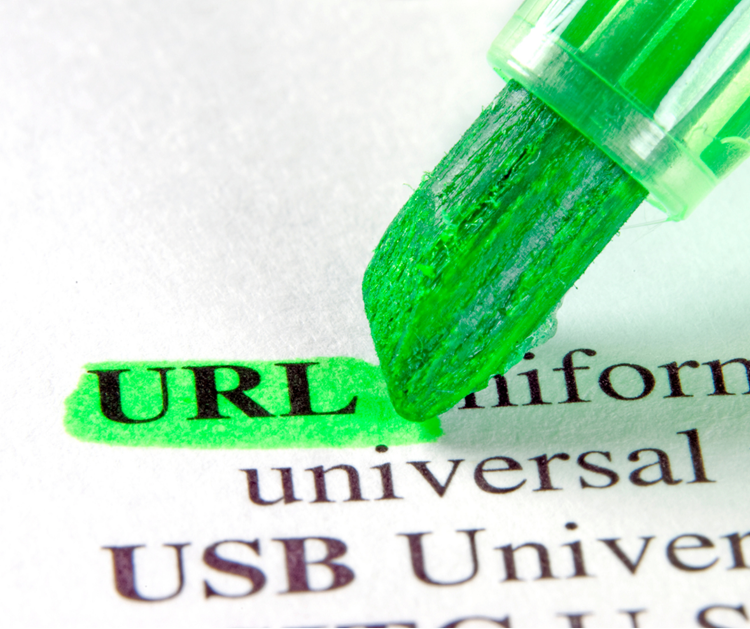7 Tips for Citing Links
Our recommendations for working with URLs

Image: Canva.com
Gone are the days of citing only printed materials when writing a research paper or thesis. Depending on your subject area, you might not be using any physical sources at all and may instead rely entirely on digital versions of books, journal articles, and reports in PDF format.
However, the citation of webpages that don’t fall into any of the traditional categories of academic sources are a bit of a special case. When you starting searching for sources in a search engine, you’ll likely find information on academic websites but also on company pages, news portals, blogs, social media sites, and many other types of webpages. Before deciding whether or not to use a website in your own work, make sure to evaluate its quality carefully and be especially wary of fake news.
When you do find a website that looks like it would be a good source and you want to cite it, what’s the best way to save a copy of it long-term and how can you best format long links in your bibliography? Find out below.
Saving online sources
You’ll usually begin your search for sources in your browser, either in a research database (the best option) or in a search engine if you’re doing more of an exploratory search at the beginning of a project. If you have a large screen, you can create a new tab for each new source you find and still maintain an overview… at least at the beginning. At some point you’ll likely have too many tabs, and you’ll start to worry that you’ll accidentally close them all by accident. Of course, you can always use the browser history to restore them, but there are alternatives. You can find some of our recommendations for helpful software tools for saving and evaluating webpages in this previous blog post.
One of these tools is the Citavi Picker. In addition to the URL link, the Picker also saves additional information, such as the title of the webpage, the last modification date, and the author of the content on the webpage. For most citation styles this is the minimum amount of information you need to cite a webpage; the link by itself is not enough. The quality of the information that the Picker is able to import depends on the quality of the metadata provided by the website. Double-check the page to see if there is additional information you might need for your citations and then add it to Citavi as well.
Another advantage of using the Picker is that you don’t need to keep track of when you visited a webpage. The Picker will automatically add the access date when importing the page. When you later cite the source, this date will automatically appear in your bibliography if your citation style requires it, for example with the text “Last accessed on”. To ensure that you will be able to access the content of the webpage in the future, save a copy of it as a PDF. Additional tips for backing up your webpages and ensuring that you can cite them long-term can be found in this previous blog post.
Links in your bibliography and footnotes
When citing webpages in your paper (for example, with the Citavi Word Add-In), you almost always will need to specify the URL. But sometimes links can take up a lot of space, especially in the footnotes. Is there are anything you can do to avoid this?
This German-language example on Twitter is an example of a radical solution: the author omits links with the recommendation that the reader instead search for the source using a search engine. We would never go that far! You want to help your readers find the sources you cited as easily as possible so that they can verify your claims.
So, if you shouldn’t omit the link, which alternatives do you have to save space, make your links easy to read, and also ensure that the corresponding webpages are easy to access? We’re glad you asked!
One caveat first: before reading our 7 tips below, make sure to check your citation style guidelines to see what recommendations are given for citing URLs both in your text and in the bibliography, since some styles will specify URL formatting rules in great detail. For other styles that have less information, read on.
- Only specify the URL in the bibliography
If you’re using an in-text citation style, you’ll be following this tip by default, since you’ll usually only need to provide author last names and the year or a reference number in your citations. The complete information for each source appears in the bibliography. If you’re working with one of the few footnote styles that requires only a shortened citation in the footnotes, you’ll be in the same boat. The link then only needs to appear in the bibliography.
It’s a different matter if you’re working with a traditional footnote style in which all the source information should appear in the footnotes. In this case, an especially long link can take up a great deal of space at the end of the page that you would have wanted for the body of your text. But even if your links are only saved in the bibliography you’ll still have to face the question of how best to format them. For that, tips 4-7 below can help. - Check your URLs
If you copy links directly from your browser, you should double-check whether you can still access the website when you copy it to another browser tab or window. On some webpages content is dynamically generated and the URL in the address bar won’t link directly to the page you were looking at. In this case, check the page to see if you can find a direct link specified somewhere on it (usually near the bottom of the page). Make sure to copy and save this link. If you copied links into your Citavi project automatically using the Citavi Picker, you can double-check if the links work by using the link checker add-on. The add-on also updates the last access date, so it’s great to use just before finalizing your paper. - Make use of permalinks where available
The best links to web content are permalinks. They ensure that web content is available long term. For example, the DOI number associated with a journal article is a type of permalink. Databases and online encyclopedias usually also offer permalinks. For example, Wikipedia lets you copy a permalink to the current version of the article by clicking “permanent link” in the navigation column on the left side of the article. - Shorten URLs
Links should be as compact as possible but should obviously still work. If you can’t find a permalink for the page, and if you copied the URL from your browser or used the Picker to automatically import it, make sure to shorten the URL as much as you can. For example, you can delete an appended session ID, which appears as a series of numbers and letters at the end of your link. Then, always check in a new browser tab if you’re still able to access the page with the shortened link. - Use direct links
Don’t copy a link from the results page of a Google or database search. These links are often long and sometimes won’t work. Instead go directly to the page and then copy the link. At times you may need to locate a subpage using the website site map or navigation. - Don’t use a URL shortener in most cases
If tips 2-5 don’t help and your URL still extends over multiple lines, you might consider using a service that lets you shorten your links, such as cc.
The advantage of a URL shortener is that – depending on the service used – you can individually name the link and see how many times it was clicked. However, there are also drawbacks to consider. The reader can no longer evaluate the quality, source, and relevance of the webpage by looking at the link but first has to click the link to view the page. In addition, you’re also dependant on the availability of the link shortener. If the service no longer exists in five or ten years, your future readers will no longer be able to find the source you cited.
For this reason we recommend only using a URL shortener as an addition to the original URL. - Break up long URLs
Even if you’ve shortened a URL as much as you can, you still might get undesired spacing or formatting if Word automatically breaks it up in a strange way. How can you avoid that so that you don’t end up with lots of empty space in your bibliography entries?
If you’re working with Citavi, the URLs will automatically contain breaks that make sense. The rules for how to break apart the links can even be altered by making a change to the “Online address” component in the citation style you’re using.
If you’re not working with Citavi or if the result isn’t what you want and you don’t want to change the style, you can also make manual changes when performing the final checks for your paper. If using Citavi, make sure to first convert your Citavi fields to text. The conversion to text also converts your URLs to clickable links. After the conversion, place the cursor where you want the break to be and press “Shift + Enter”. If you instead want to get rid of a hyphen in the URL that was inserted by the automatic hyphenation feature in word, you can do by using a non-breaking hyphen. To do so, press and hold Ctrl + Shift while typing the hyphen.
We hope that our 7 tips will help ensure that the links in your bibliography and footnotes look and function exactly as you want.
What are your tips for using links in your research paper? Do you disagree with any of our recommendations or did we leave anything out? Continue the discussion with us and other blog readers under the Facebook posting for this blog post or write to us at blog@citavi.com.


